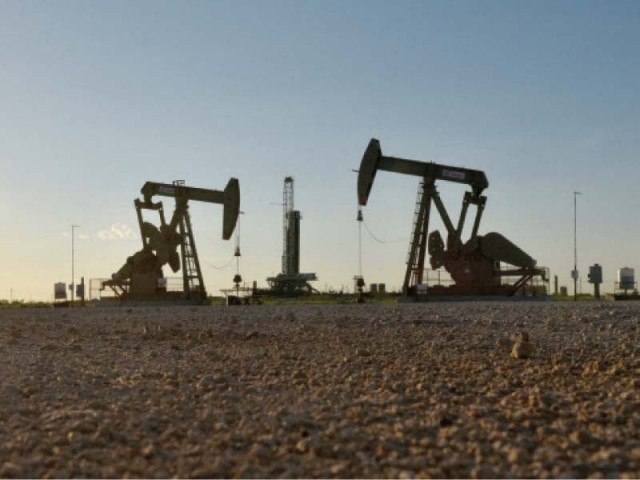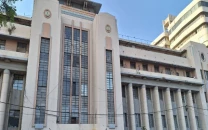Oil, gas reserves to end in 15 years
Hydrocarbon deposits deplete rapidly since no new major discovery made

Pakistan’s oil and gas reserves have depleted by 17% and 6%, respectively, in the past one year till June 2023 as no major hydrocarbon discovery has been made since long.
It signals that leftover deposits will be fully consumed in the next 15 years, according to a research house that cited data of the Pakistan Petroleum Information Services (PPIS).
In a report on oil and gas exploration, Arif Habib Limited analyst Muhammad Iqbal Jawaid said that Pakistan’s crude oil reserves contracted by 17% to 193 million barrels in June 2023 compared to 233 million barrels in the same month of last year. The depletion was because of a “natural decline in major oil fields”.
Similarly, natural gas reserves went down by 6% to 18,339 billion cubic feet (bcf) at the end of June 2023 compared to 19,513 bcf in June 2022.
“The country’s total hydrocarbon reserves have a lifespan of 15 years,” he projected while observing the hydrocarbon production and consumption trends.
He elaborated that the reserves left with Oil and Gas Development Company (OGDC) were likely to be consumed in 20 years while the reserves of Mari Petroleum would be exhausted in 15 years.
Pakistan Petroleum Limited (PPL)’s hydrocarbon reserves have only around 11 years of lifespan left and the reserves owned by Pakistan Oilfields Limited (POL) will vanish in eight years.
These are the four major oil and gas exploration companies operating in Pakistan.
The country saw an addition of 66 million barrels of oil equivalent (BOE) to total reserves by June 2023. New oil and gas deposits came from different fields such as Takhat, Mari Ghazij, Bolan East, Bettani (Wali), Kot Nawab and Shahpur Chakar North.
Pakistan has made no meaningful discovery of crude oil and gas in more than two decades, heavily increasing its reliance on expensive imported fuels to meet consumer needs.
Experts point out that Pakistan meets only 30% of its energy requirement through the local production of oil and gas while the remaining 70% needs are met through expensive imports. For this, the country has to arrange huge foreign exchange reserves.
The share of energy stands at around 25% (around $1 billion per month) in the country’s total import bill.
Industry players has been waiting for years for the announcement of a new oil and gas exploration policy, comprising incentives like an attractive increase in prices, to accelerate production activities in the country.
Previous policy had been announced over a decade ago in 2012. Different governments initiated work from time to time on a new policy, but to no avail.
Besides, poor law and order situation and terrorism incidents in and around energy-rich blocks in remote areas and an unattractive investment climate are the other major challenges, hampering efforts in the way of finding major new reserves.
Latest data suggests that Pakistan produced 69,938 barrels of oil per day and 3.26 bcf of gas per day in the week ended August 31, 2023.
AHL’s Jawaid said that the decline in oil reserves was observed in major fields including Jhandial, Pasakhi/ Pasakhi North, Chanda, Adhi, Nashpa, Shahdadpur and Makori East. They registered a plunge of 99.6%, 27%, 15%, 13%, 13%, 6% and 3%, respectively, in the past one year.
Meanwhile, oil reserves in Mehar, Umar, Halini and Pindori fields registered a jump of 21%, three times, three times and four times, respectively, in the year under review.
In the case of gas, its reserves in Kunnar West Deep, Uch, Adhi, Qadirpur, Shahdadpur, Nashpa, Sui and Mari fields depleted by 5%, 5%, 6%, 7%, 8%, 9%, 10% and 12%, respectively.
In the AHL E&P universe, oil reserves of PPL, POL and Mari declined by 10%, 59% and 77%, respectively whereas OGDC’s oil reserves recorded an uptick of 1%.
In terms of gas reserves, OGDC, PPL, Mari and POL’s reserves decreased by 4%, 4%, 11% and 55%, respectively.
Published in The Express Tribune, September 9th, 2023.
Like Business on Facebook, follow @TribuneBiz on Twitter to stay informed and join in the conversation.



















COMMENTS
Comments are moderated and generally will be posted if they are on-topic and not abusive.
For more information, please see our Comments FAQ